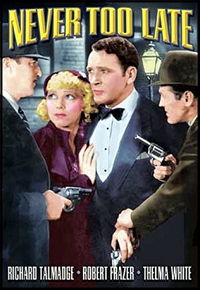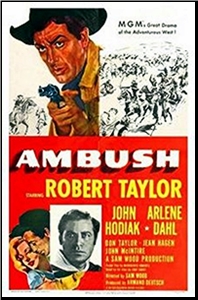September 2018
Monthly Archive
Sat 8 Sep 2018
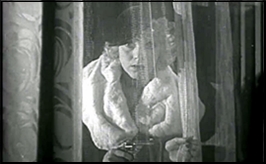
NEVER TOO LATE. Reliable Pictures, 1935. Richard Talmadge, Thelma White, Robert Frazer, Mildred Harris, Vera Lewis, Robert Walker, George Chesebro. Director: Bernard B. Ray (as Franklin Shamray).
This is not a movie I can recommend to you, and in fact, if I were to be perfectly honest, and why shouldn’t I be?, I’d advise you to stay away, even if ever you have an hour to spare and nothing else to spend it on.
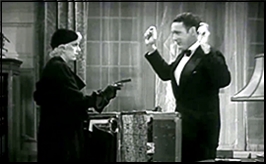
On the other hand, it is possible to find something interesting to see in it (and therefore to say about it). Leading man Richard Talmadge plays a police detective in this one, although that’s a fact that I don’t believe was made known right away. His task is helping a girl retrieve a set of pearls her sister, wife of the police commissioner, gave to an insidious (and pernicious) blackmailer.
He knows the pearls are hidden in a shoe inside a trunk that for some reason is being sold at a police auction. To get there, he smacks up his car, gets into a police wagon heading for the auction, swings out the door in back up onto the roof and rides to the auction standing and swaying on top of the police wagon, then somersaulting to the ground when it stops.
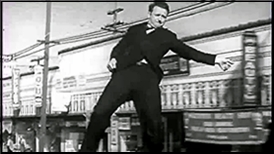
It turns out, not for the story’s sake, but in real life Richard Talmage was also a stunt man for much of his movie-making career, and as a result there are several scenes in which he is able to show off his prowess in that regard, somersaulting down stairs, jumping off second story balconies to the floor below, pivoting on tall pieces of lumber from the top of one building to another, and slugging it out with the bad guys, usually at odds of four or five to one against him.
This is fun stuff, all right, but it really has nothing to do with the story, about which I’ve already said all I’m going to.
Sat 8 Sep 2018
Posted by Steve under
Reviews[6] Comments

ROSS H. SPENCER – Kirby’s Last Circus. Birch Kirby #1 (and only). Donald I. Fine, hardcover, 1987. Worldwide, paperback, November 1989.
Meet Birch Kirby, as the back cover of the paperback edition says. He’s a fourth-rate Chicago-based PI if there ever was one — and the CIA’s candidate to uncover what’s behind the secret messages being beamed to the Soviet Union from downstate Grizzly Gulch, the permanent site of Admiral Doldrum’s circus.
Their rationale : anyone so obviously incompetent and inept must be an absolute genius, complete with open fly. Good-natured bawdy humor prevails. Slapstick so pure, you wonder if Spencer can keep it up for over 200 pages. He does. It’s the story that doesn’t.
— Reprinted and slightly revised from Mystery*File #17, November 1989.
Bibliographic Note: Ross H. Spencer was also the creator of PI’s Lacey Lockington (3 books), Luke Lassiter (1 book), “Buzz” Deckard (1 book), and of course the legendary Chance Purdue (5 books).
Fri 7 Sep 2018
Lee Goldberg left this bit of good news as a comment following Richard Moore’s previously posted essay on author Ralph Dennis. Thinking the news deserves to be spread as much as possible, I’m reposting it here:
Lee Goldberg on the RALPH DENNIS Novels.
I’m excited to announce that I’ve acquired the rights to all of Ralph Dennis’s work — his published and unpublished novels. Brash Books will be re-releasing his 12 Hardman novels, starting with the first four in December, and the rest through 2019. The Hardman books include a terrific introduction by Joe R. Lansdale … and subsequent books include afterwords by Richard A. Moore, Ben Jones and Paul Bishop. The first two titles in the series, Atlanta Deathwatch and The Charleston Knife is Back in Town are already available for preorder in paperback and ebook on Amazon, iBook, Barnes & Noble and Kobo.
We’ll also be re-releasing in 2019 a substantially revised version Ralph’s WWII thriller MacTaggart’s War, which we’ve retitled The War Heist. It was his last published title and didn’t do as well as he, or the publisher hoped. I believe i know why… I’ve gone back to his original manuscript, rearranged chapters, deleted chapters, and made other revisions to heighten suspense, sharpen characters, etc… cutting the book by about 35,000 words along the way (it still clocks in at 100K words).
And we’re also going to be releasing many of Ralph’s unpublished novels … which, if they need revision, I will be doing myself. One of the manuscripts is going to be slightly reworked as a sequel to his previous published novel Atlanta (which we are likely to retitle before re-publishing).
This has been a passion project for me ever since Bill Crider and Paul Bishop introduced me to the Hardman novels five years ago. I immediately decided I had to get them back into print, so I sought out the advice of my good friend Joel Goldman … and as a result of those discussions, a partnership and a publishing company were born. Now, after the publishing nearly 100 titles together, we are finally putting out the novels that we’d hoped would be our first releases.
I can’t thank Richard Moore enough for all of his help making this deal finally happen.
I can’t wait to hear what you think of the books as they roll out… and I hope you will spread the word. We want Ralph Dennis to get the recognition and readership he’s long deserved.
Fri 7 Sep 2018
REVIEWED BY DAN STUMPF:

THE WORLD’S GREATEST SINNER. Frenzy Productions, 1962. Written, produced, directed by & starring Timothy Carey. Music (some of it) by Frank Zappa. Narrated by Paul Frees.
“I believe we have been in the presence of Genius. Unfortunately, what the part calls for is Talent.â€
–Orson Welles
The more films I watch (and I’ve watched a few) the more convinced I am that Cinema in the last half of the 20th Century was all about Timothy Carey.

Start with THE WILD ONE, EAST OF EDEN, THE KILLING, PATHS OF GLORY, ONE-EYED JACKS, RIO CONCHOS, then move on to BEACH BLANKET BINGO, MERMAIDS OF TIBURON, THE OUTFIT, POOR WHITE TRASH, HEAD, SHOCK TREATMENT, BIKINI BEACH, and FRANCIS IN THE HAUNTED HOUSE — the man seems ubiquitous. And often memorable. His wild dance in POOR WHITE TRASH combines the grace of Chaplin with the energy of Gene Kelley.
“Unfortunately, what the part calls for is talent.â€
Watching Carey on screen, straining at bit parts, one can sense the creative passion oozing from his pores. So it was probably inevitable that he made this very personal and idiosyncratic film, with nods to CITIZEN KANE, A FACE IN THE CROWD and THE IMMORAL MR TEAS. And while it’s touched with greatness, it’s still not very good.

Most of the problem can be set down to budget. Much of THE WORLD’S GREATEST SINNER is beset by cheap sets, poor lighting, bad acting (Well it’s hard to tell about the acting since most of the actors have to declaim their lines just to register on the tinny sound track.) mis-matched stock footage, and the general air of desperate cheapness one finds in porno films — or ahem! at least I assume that’s what porno films are like. Not that I’d know first-hand, you understand.
Withal, this tale of a bored executive who becomes a street preacher, then a rock star, and finally a demagogue teetering on the edge of a Presidency that will destroy the nation, has its moments. Some of the camera compositions are quite striking (Edgar G. Ulmer was one of the cameramen.) some of the ideas really imaginative, and Carey himself is always compelling.
“Unfortunately, what the part calls for is talent.â€

I read an article once about Timothy Carey protesting in front of a film festival that wouldn’t show THE WORLD’S GREATEST SINNER. The author interviewed Carey at length, then went to the director of the festival for his side of things, and got the comment, “It’s a really bad film.â€
Which it is. But this is not the inept badness of GLEN OR GLENDA, nor the overblown malaise of… of… Oh hell, name any expensive flop. Carey fills SINNER with a passion only partly obscured by its own awfulness. The result is memorable.

All too often SINNER screams its passion so loudly it provokes unintended laughs: As when Paul Frees narrates as the devil and we cut to unrelated stock footage of a snake in the grass. Or when Carey stalks into a Church to the overblown accompaniment of “Mars†from Gustav Holst’s THE PLANETS. Or when the stock footage simply doesn’t match. Or when… well suffice it to say, there’s plenty of it here.
But in my memory of this fiasco, I keep coming back to the really fine and imaginative parts –and there are plenty of them, too. So I’ll just finish by saying it’s a film to approach, if at all, with a tolerant attitude and a wary eye.
And don’t look for talent.
Thu 6 Sep 2018

TEN WANTED MEN. Columbia Pictures, 1955. Randolph Scott, Jocelyn Brando, Richard Boone, Alfonso Bedoya, Donna Martell, Skip Homeier, Clem Bevans, Leo Gordon, Minor Watson. Director: H. Bruce Humberston.
Twelve years after making The Desperadoes (reviewed here ), Randolph Scott is starting to show his age a bit, but though he was in his 50s when this movie was made, he could still ride tall in the saddle. Here he’s a cattleman whose hopes for the peaceful growth of Arizona go up in a blaze of bullets.
Opposing him is Richard Boone, a rival whose craving for wealth and power leads him to bring in a band of outlaws to help him. (I don’t think there is anyone whose eyes could burn with such bitter hatred as Boone’s.) Lots of action keeps the muddled story going.
— Reprinted from Movie.File.8, January 1990.
Wed 5 Sep 2018
Posted by Steve under
Reviews[4] Comments
REVIEWED BY BARRY GARDNER:

JAMES SALLIS – Black Hornet. Lew Griffin #3. Carroll & Graf, hardcover, 1994. Avon, paperback, 1996.
Sallis is a poet, teacher, and critic, in addition to being a writer. Besides his two previous “mysteries,” he has written science fiction and a critical book about Jim Thompson, David Goodis and Chester Himes. He lives in New Orleans.
The time is the late 60s, the place is New Orleans. Lew Griffin is eking out a living doing trace and repo work, living with a prostitute as much as he lives anywhere. He’s done a little time, and he’s done a little Army time, and he’s not headed much of anywhere.
New Orleans is headed for trouble. Not long past [there was] a black sniper spree that left many dead and injured; now it seems [as though] someone else is shooting people. White people. One of them is a lady reporter whom Lew has met in a blues bar, and she’s shot as they walk out together. It’s personal now, something he’s unable to walk away from, and he begins to track down the faceless shooter.
Black Hornet is a prequel of sorts to Sallis’s two previous Lew Griffin books, The Long-Legged Fly and Moth. The three form a disjointed narrative of Griffin’s life as a black man in New Orleans, and his progression from little more than a street tough to a professor.
They are beautifully written, managing to fuse elements of hardboiled fiction with more literary forms in a wholly satisfactory manner. These are slender books, but good ones.
— Reprinted from Ah Sweet Mysteries #16, November 1994.
Bibliographic Note: James Sallis has written three more in thw series since Barry wrote this review: Eye of the Cricket (1997), Bluebottle (1999) and Ghost of a Flea (2000).
Tue 4 Sep 2018
A. E. APPLE “The Diamond Pirate.” Rafferty #2. Long novelette. First published in Detective Story Magazine, 22 October 1927. Reprinted in The Compleat Adventures of Mr. Chang and Mr. Rafferty, Battered Silicon Dispatch Box Press, hardcover, four volume set, 2010.

I do not know whether the latter collection was ever published. “The Diamond Pirate” was the lead story of the October 22, 1927 issue of Detective Story Magazine, which is where I read it. It was preceded chronologically by “Rafferty, Master Rogue,” which appeared in the same magazine three weeks earlier.
In that earlier story a master criminal named Rafferty outwitted a high-powered private eye by the name of Bradley and pulled off a bank robbery that netted him some twenty million dollars, a tidy sum, even today. In this second caper, Rafferty ups his game somewhat, intending to rob the diamond district en masse on a scale never seen before.
The story opens in a mausoleum in a cemetery on a vicious rainswept night, as Rafferty’s closest lieutenants in crime meet in ear darkness to obtain the next step of instructions. In Act II, Rafferty obtains the services of a anarchic German scientist named Herr Heinie (…) but not before a long drawn-out confrontational scene between the two men takes place.
Next, one of Rafferty’s assistants tries to defect to Bradley’s side, but the former gets wise, negates the loss and continues his plans. There is quite a bit of suspense that builds along way, but what may take the modern day reader by surprise — it did me — is that [PLOT ALERT!!] everything goes off smoothly. Rafferty and his gang make off with millions of dollars worth of diamonds, the last stage of their getaway accomplished by submarine. Bradley is a complete non-factor.
There were over twenty tales told of Mr. Rafferty, at least two of them in conjunction with Mr. Chang, A. E. Apple’s equally long running version of a Chinese mastermind villain. I have no idea if Rafferty had the same amount of success in all of his ventures, but if all his schemes came off as easily as this one does, I have to wonder why the stories stayed as popular for as long as they did. A steady diet of tales such as this one would go nowhere quickly, as far as I am concerned.
Tue 4 Sep 2018
JEAN LESLIE – A Hair of the Dog. Doubleday Crime Club, hardcover, 1947. No paperback edition.

As an author, Jean Leslie is all but unknown today, but in mid-40s and early 50s she wrote a total of eight works of mystery and detective fiction, all published under Doubleday’s long-established Crime Club imprint. The first three take place in Academia and feature a series character named Peter Ponsonby, a professor of some note who dabbles on the side in writing pulp mysteries. About the author herself, Hubin supplies the following information: “Jean Leslie Cornett (1908-1994). Born in Omaha, raised in Santa Monica; teaching fellow in psychology.”
Anyone interested in a little Internet research can take it from here. This may be a small foothold to work from.
The book itself, Leslie’s fourth, begins in an unusual way. The story is told by Jennifer Caldwell, a young woman who has been the secretary to a wealthy but retired manufacturer of dog food for several years now. She stops in at a lawyer’s office, one chosen at random, to explain her concerns. Her employer has just decided to cut several family members out of his will, but to add a bequest of $100,000 to Jennifer.
After telling Mr. Barclay all the details of her employer’s family, plus two research scientists who live on the property, along with two servants, she then tells him she doesn’t want the money and what can he do to help her about it? He replies that he’s a corporation lawyer and he doesn’t handle cases like this. She retorts, then why did you spend the last hour listening and leering at me? He replies, who wouldn’t?
This is, of course, yet another dysfunctional families such as vintage detective mysteries are often populated with, but Jennifer’s employee, whose largess everyone else depends on, is a fine old gentleman who know exactly who the members of his family are. Unfortunately someone decides to stop him permanently before he actually signs the new will he has threatened everyone with.
As a detective story, this one is purely middle of the road, and in fact I enjoyed it less than I did the characters themselves, all of whom had some depth to them, including the narrator, who quickly reveals that she has some secrets she’s not sharing. As for Mr. Barclay, it seems as though the attraction was mutual, and no, Chapter One is not the last we see of him.
Mon 3 Sep 2018
REVIEWED BY DAN STUMPF:
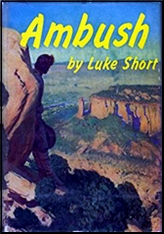
LUKE SHORT – Ambush. Houghton Mifflin, hardcover, 1949. Bantam #853, paperback, December 1950. Many other reprint paperback editions.
AMBUSH. MGM, 1950. Robert Taylor, Arlene Dahl, John Hodiak, Don Taylor, John McIntire, Jean Hagen, Leon Ames, Chief Thundercloud and Charles Stevens. Screenplay by Marguerite Roberts, from the novel by Luke Short. Directed by Sam Wood.
Reading Luke Short’s Ambush, it’s easy to see why so many of his books were translated into noir Westerns: The terse, tough dialogue; fast, bloody action, and most of all Short’s view of the World as nasty, brutish and vast. Short’s heroes seem to be shaped by the terrain they travel, from snow-bound mining camps, to wide open cattle ranges and harsh deserts, pitiless as Chandler’s Mean Streets. Thus they beget films like Ramrod, Station West, Blood on the Moon … and Ambush.
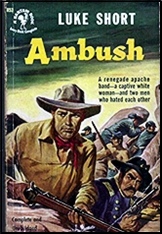
As the novel opens, ex-army scout Ward Kinsman has been mining gold for months in Apache country, keeping his presence a secret until old friend and fellow-scout Frank Holly noses him out and brings the Apaches down on them both. We get a long, tense scene of the two men making their way down an escarpment in the dark to escape, then back up again to throw their pursuers off the trail. Finally they reach the Army outpost whence Holly was sent to summon him, he’s asked to scout for an expedition to find a war chief known as Diabolito and rescue a captive from him — a mission he flatly refuses, in the tradition of hard-boiled heroes everywhere.
Of course, Kinsman does eventually take on the job, and while he’s working his way around to it, we get background on the soldiers and soldiers’ wives who make their homes at the outpost, and the little dramas that fill their lives. This could have been a dull stretch, but Short keeps it moving with clever dialogue (“What comes after a Billion?†“I don’t know. Fifteen, I think.â€) and bursts of action.
Best of all, when the expedition gets underway the action is plentiful and shaped by the relationships we watched simmering back at the fort. Short has a gift for letting the rough-hewn characters shape their own ends, and best of all he knows how to keep it exciting.

Screenwriter Marguerite Roberts and director Sam Wood were smart enough to stick close to the book when they filmed this, and they do a fairly good job of getting through the personal drama quickly and on to the injun fightin’. Robert Taylor uses his type-cast sharpness to good effect; his piercing glance seems to take in each rabbit and lizard scuttling across the rocky terrain and file it away for future use. John McIntire, made up to look like Buffalo Bill, is fine as Frank Holly, and Jean Hagen puts in a quietly moving performance as a battered wife that steals the show from ostensible leading lady Arlene Dahl.
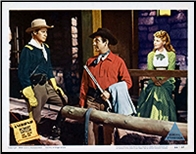
There’s also some movie shorthand here that works well: In the book, Luke short limns the characters of Diabolito, crazed war chief, and Tana, a warrior who has switched sides (or has he?) to scout for the Army. The movie doesn’t have time to do this, so director Wood simply uses actors Charles Stevens (who made a career of crazy Indians) and Chief Thundercloud, whose inexpressive face seems to hint at all sorts of possibilities.
There are a couple of awkward spots where the screenplay departs from the book and Roberts patches it over with awkward dialogue, but Ambush brings off a memorable finale, as the Cavalry rushes to catch up with fleeing foes… and we suddenly see they are charging into the canyon where the film opened – with an ambush.
Nice touch, that.
Sun 2 Sep 2018
SELECTED BY DAVID VINETARD:

BARRY PEROWNE “Raffles and the Death Rocket.” Popular Detective, March 1936. First published in The Thriller, UK, #249, 11 November 1933.
Barry Perowne, nephew of Bertram Atkey, the creator of gentleman adventurer Smiler Bunn, began penning a series of short stories about E. W. Hornung’s famed amateur cracksman Raffles in the early 1930s. These stories appeared first in the British pulp Thriller, and later in hardcover and American pulps like this March 1936 issue of Popular Detective. In these tales Bunny Manders and A. J. Raffles pursued crime and justice much in the same manner as the Saint or Norman Conquest.
As this one opens Bunny and Raffles have been summoned to a strange house in Mayfair where they are to observe an “experiment in the conquest of space†on of all nights November the 5th, Guy Fawkes night:
Piccadilly Circus, with its roar and rumble of traffic, its glaring, winking, pulsating sky-signs, though a bare ten minutes away, seemed strangely remote from this singular house in this gloomy, aristocratic street.
Muffled detonations came from the back streets, vivid flashes in the sky. November the fifth — night of fire works. Night of masks and shooting stars, but a night for the grotesque, the mysterious, the dramatic. A night through which ran a cruel, bright, eager motif — Flame!
With a sense of adventure my friend, A. J. Raffles, cricketer, gentleman, and crook, and I, Bunny Manders, his partner in crime, passed beneath the arch and into the shadowy courtyard.

Never let it be said Perowne hadn’t inherited a fine eye and ear for mystery and atmosphere. He was the author of many fine tales of suspense and adventure of his own aside from briefly continuing the adventures of cracksman Smiler Bunn and more extensively those of Raffles. Here we are in the popular gentleman adventurer mode of the between-the-Wars years, and Perowne handles the style with aplomb.
Professor Louis Mendawe is to make the great experiment with a carefully chosen array of guests, but as Raffles and Bunny arrive at the costume ball to accompany the experiment they find only their hostess, the strikingly beautiful Lady Carla Mendawe and the other guests, including Grant Cardinal KC, who Bunny opines is much too familiar with the police in the form of their nemesis Inspector Duke Roth of the Yard, and a distinguished group of guests and the small fortune in jewels accompanying them, making Bunny more than a little nervous, especially when Raffles follows his restless nose to prowl around and they spy a silver haired girl in a crimson mask and follow her to a roof top observatory when …
And that second, with a queer, muttering catch of his breath, Raffles hurled himself forward. I heard her low cry as they struggled. Then, sharp and clear through the humming of the machinery, the crack of an automatic, a crimson spurt of flame, brought me lunging to my feet!
And we’re off, the suicidal young lady Lady Menshawe’s social secretary, Lesley Lorne, engaged to Lord Menshawe’s assistant Piers Armour, who was guarding the lab and saw the struggle. He claims to be as puzzled as Raffles, but reveals his employer has been nervous about this strange night.
Then in short order Raffles and Bunny intercept a mysterious threatening phone message for Lady Menshawe , who insisted the experiment coincide with Guy Fawkes Night, and a prowler with a silenced weapon shoots at them while the rest of the guest are watching fireworks in the garden.
What follows, all in the course of one incredible night involves a rival jewel thief, known as The Marquis, a crime of passion, one madman, the most incredible plot for disposing of a body I have ever encountered, a rocket launched to the moon (from the middle of Mayfair at that), and of course a victory, and profit, for Raffles sparing the lovers, young and older, embarrassing Inspector Roth, and some damn imaginative if hardly fair play detective work on Raffles’ part.
No, it isn’t great literature, but is is great fun, this one as much in the American and the British thriller tradition, and it makes me wish I had read more of the earlier round of Perowne Raffles stories. This one is beautifully crafted and moves at a rapid pace, managing, just mind you, to cross all the t’s and dot all the i’s before the highly satisfying final image.
“Remember I dropped my cigarette case when we were interviewing the Marquis? His wall-safe, Bunny, was wide open and close at hand.â€
I sat up abruptly. His lighter clicked. In the small flame I saw resting on his palm something that flashed and flickered with the cold light of diamonds.
The Khaipore pendant!
“A penny for the guy,†said Raffles as blithely as had the Guy Fawkes night urchins used the phrase in Piccadilly Circus. Dropping the pendant into the pocket of his white waistcoat, he tilted his silk hat over his eyes and composed himself for sleep.
Salaam, Raffles!
Salaam indeed.
« Previous Page — Next Page »



